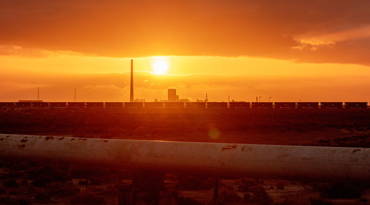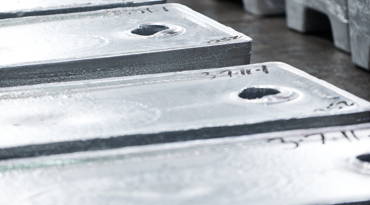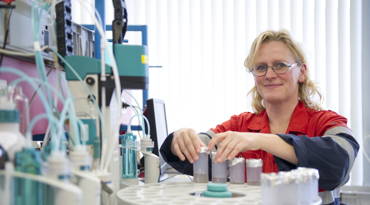How does Nyrstar produce lead?
Nyrstar has a market leading position in lead, producing a number of refined products for market. This includes lead concentrate and refined market lead (99.97% and 99.99%), as well as lead-antimony alloys, copperised-lead alloys, calcium lead alloys and calcium tin-lead alloys.
Lead concentrate is essentially a mineral called galena, which predominantly contains lead and sulphur. Smelting converts this into a metallic lead form.
The technology of Nyrstar’s lead smelting process includes top submerged lance (TSL) furnace, blast furnace, lead refinery, slag fuming, electrowin copper, and solvent extraction/electrowin (SXEW).
TSL and blast furnace process
The top submerged lance (TSL) and blast furnace operations are the actual smelting part of the process and involve the high temperature reduction of sinter with metallurgical coke to produce a crude lead bullion and slag. Lead bullion contains small amounts of other metals including silver, gold and copper.
All of these elements are extracted from the lead during the various refining processes and become valuable marketable metals.
Two Grades Primary Lead (Nyrstar BHAS) are registered in the London Metal Exchange (LME).
Where is lead used ?
Lead’s primary usage is for the production of batteries. In fact, more than 80% of world production goes into the manufacture of lead acid batteries which play an important part in the starter mechanism for automobiles.
Lead is also used in a wide variety of products found in and around our homes including pipes, solders, gasoline and batteries.
Other end uses for lead include underwater cable sheathing, glassware, radiotherapy equipment in hospitals, safety systems in aircraft and roof sheeting.
History of the lead-acid battery
The lead–acid battery was invented in 1859 by French physicist Gaston Planté. The lead-acid battery cells have a relatively large power-to-weight ratio so that they can supply high surge currents. Coupled with their low cost, it makes them very attractive and suitable for use in starter motors for automobiles, batteries for e-bikes and such.
As lead-acid batteries are inexpensive compared to newer technologies, they are widely used even when surge current is not important and other designs could provide higher energy densities.
Other elements recovered through the lead refining process also have niche markets. This includes tellurium, used in electronics semiconductors and solar panels, and bismuth, found in medicinal and building materials.


